Bat Hawk South Africa
The new South African Bat Hawk has been designed and developed by Micro Aviation South Africa primarily for surveillance and is the most affordable light sport aircraft on the market. |
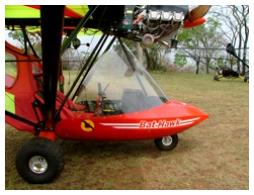 |
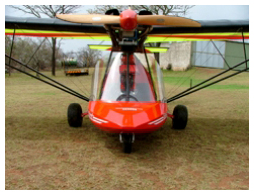 |
 |
The Micro Aviation B22 Bantam is a New Zealand "microlight aircraft" designed and produced by Max Clear in New Zealand.
The aircraft is supplied as a complete ready-to-fly-aircraft. The aircraft complies with the Fédération Aéronautique Internationale microlight rules as well as the United Kingdom BCAR Section 'S' regulations. It features a strut-braced high-wing, a two-seats-in-side-by-side configuration enclosed cockpit, fixed tricycle landing gear and a single engine in tractor configuration. As a conventional 3-axis microlight, the Bantam does not rely on pilot weight shift to affect control. Twin seats are positioned side by side for full dual control and both crew members are well protected from the weather by an aerodynamic fibreglass pod and large wrap-around windshield. Performance of the Bantam in its multiple options has been widely acclaimed as nothing short of sensational. In the hands of a learner it remains perfectly balanced for fingertip control and hands off flight, but pushed to the maximum by an experienced pilot the maneuverability is breath-taking. |
Several major design changes were incorporated into the Bat Hawk, which included a larger six-cylinder Jabiru engine with more substantial cheekplates and engine mountings and increased all up weight to 540 kg, stronger main gear, larger 'bush' tyres, improved brakes, increased fuel tank capacity to 80 / 100 liters, zip open / close luggage area, MGL EMS, stronger wing spars and wing struts, re-designed more streamlined nose pod and a much larger windscreen for improved visibility. Perhaps the most obvious visual change is the fact that the new larger windscreen is now positioned forwards of the front no.1 downtube, thereby creating a much roomier cockpit.
There is a big demand for this LSA aircraft in the surveillance and conservation industries and Micro Aviation believes that contrarily to what is published, the Bat Hawk is the only true 'bush-plane' on the market. "Other manufacturers advertise 'bush planes', but they all have propellers that are far too close to the ground, which are damaged by grass, sticks, stones and sand. On the other hand the Bat Hawk has its engine and propeller installed high up out of the 'damage area' and also very importantly," out of the pilot's line of sight". All of the other supposed 'bush planes' have high instrument panels which severely limit and restrict outward visibility. The Bat Hawk's cockpit is very similar to that of a helicopter with excellent forward visibility as well as to both sides. All parts and materials have been sourced in South Africa, fabricated and approved. |
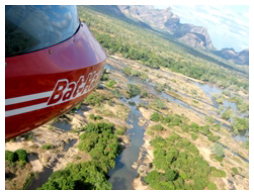 |
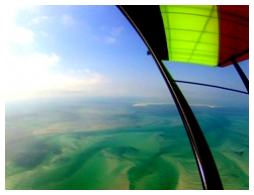 |
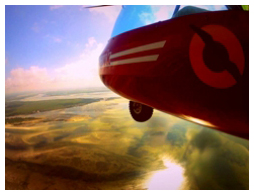 |
During flight tests conducted over the weekend of 1 December 2012, test pilot CC Pocock managed to pull 4 Gs during VNE tests, with maximum pull-up and climb testing. He entertained everyone with a magnificent display of loops, barrel rolls and stall turns in the Bat Hawk. All this was recorded on the G-meter, which was installed, as well as on the MGL S/D card. Wing loading tests up to 3000 kg on the Bat Hawk wing have been conducted and she carried it with ease.
The Bat Hawk is a delight to fly and like its 'baby brother the Bantam', needing zero rudder input while flying. There are no 'excess yaw' tendencies at all. She takes off in 50 metres and climbs out at 1200 feet/min with a 100kg pilot and full tanks at Nelspruit altitude at 3000 feet above mean sea level. I had the opportunity to fly with Andrew to a nearby farm so that I could conduct the aerial photography from a Kitfox and I was convinced that the Bat Hawk presented similar flight characteristics to the Bantam, but with a more 'solid feel' due to the increased power to weight ratio and strengthened structure. Andrew says the Bat Hawk provides a much more solid feel with its thicker cheek plates, whilst the cruise speed has increased to 75 knots from the Bantam's cruise speed of 65 knots using the same engine. Stall speed remains 35 knots, although with a single pilot and half tanks this comes down to 32 knots. |
Multiple Roles
The Bat Hawk airframe is strong and durable, allowing it to be used in many roles. With the second seat available to take significant loads a number of Bat Hawks have been adapted for use in a variety of applications such as: |
||
Side by side seating, dual controls, comprehensive instrumentation and flying characteristics totally free of vices, make the Bat Hawk an ideal flight training aircraft. Due to the conventional 3-axis aircraft controls, the Bat Hawk is ideally suited for initial flight training towards a National Pilot's Licence (LSA). |
||